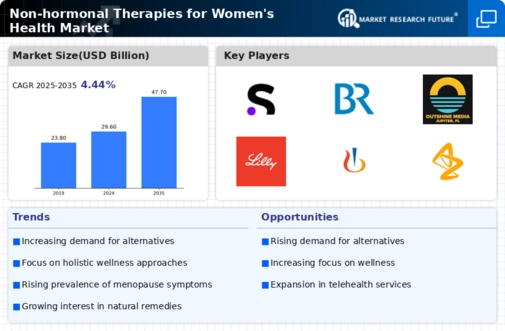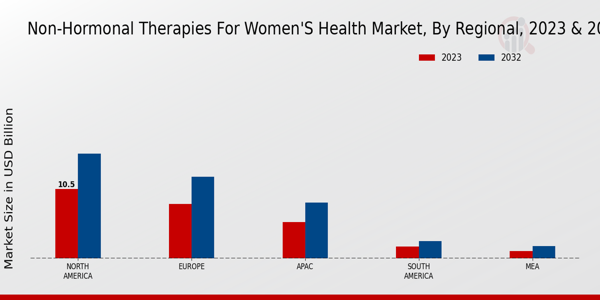The Non-hormonal Therapies for Women’s Health Market is an evolving landscape characterized by a range of diverse products aimed at addressing women's health issues without the use of hormones. This market has gained traction due to increasing awareness of the negative side effects associated with hormonal treatments and a growing preference for alternative therapies.
As healthcare moves towards more personalized approaches, the demand for Non-hormonal options is rising among various datasets of women seeking relief from conditions such as menopause symptoms, menstrual disorders, and sexual dysfunction.
Competitive intelligence within this sphere indicates that market players are exploring innovative solutions, enhancing research and development efforts, and targeting niche segments to solidify their presence.
Furthermore, collaborations and partnerships are pivotal as companies seek to extend their market reach while addressing consumer needs with safety and efficacy at the forefront of their strategies.
Sanofi holds a prominent position in the Non-hormonal Therapies for Women’s Health Market, driven by its commitment to research and innovation. The company has established itself as a leader through an extensive portfolio focusing on conditions prevalent among women. Sanofi's strength lies in its strong pipelines that prioritize the development of Non-hormonal options, addressing a significant gap in women's healthcare.
Additionally, the company leverages its extensive global distribution network, ensuring that its products meet diverse market demands. Sanofi's dedication to patient education, awareness programs, and collaborations with healthcare professionals enhances its credibility, fostering trust with consumers.
The organization's strategic investments in clinical trials and partnerships with other innovators in the healthcare space further bolster its competitive edge, solidifying its reputation as a reliable player in this segment.
Bayer has made significant strides within the Non-hormonal Therapies for Women’s Health Market, showcasing a robust commitment to enhancing female health through innovation. The company focuses on various therapeutic areas, particularly those that can benefit from Non-hormonal approaches.
Bayer's strengths lie in its solid research foundation and its ability to introduce cutting-edge products aimed at managing and alleviating women's health issues. The company emphasizes sustainability and responsible healthcare, which resonates well with modern consumers who seek safer and more nature-based alternatives.
Bayer's strategic marketing initiatives underscore its ability to connect effectively with a broad audience by tailoring solutions specific to women's unique health needs. This approach, complemented by its ongoing investments in education and awareness regarding women's health issues, places Bayer in a formidable position within the market.
The fusion of science, patient-centricity, and collaborative efforts enables Bayer to continually adapt and respond to the evolving demands of the industry.























Leave a Comment